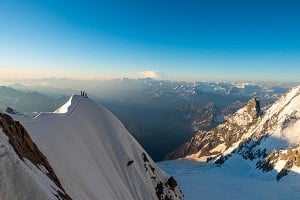
Britain's very own climate indicators are melting away. Iain Cameron, snow-patch researcher and author of The Vanishing Ice, writes about the disappearance of historic snow patches in Scotland, victims of our warming climate.
Be it Australian bush-fires, shrinking Greenland glaciers, or global CO2 levels at unprecedented levels, any reasonably observant consumer of contemporary media is positively spoilt for choice when it comes to their pick of apocalyptic climate change stories. Indeed, so ubiquitous have these news articles become, and so dire are the associated warnings, that barely a day goes by without another disaster story adding to the high level of collective dread.
To most people in the UK though, the stories we read and watch are somehow apart from us. We see them but we don't experience them. For example, we lack receding glaciers, so have to content ourselves with seeing TV reporters standing in front of massive banks of decaying ice. Our temperate, oceanic climate means we don't encounter the horrendous forest fires that torment drier, more forested countries. The suffocating heat that pushes daytime temperatures in excess of 50°C in many countries is something, thankfully, that we don't have to contend with. But it would be a mistake to imagine that we lack all hard evidence that shows changes are taking place in our own climate.
A once-ubiquitous vestige of our glacial past is, itself, becoming an artefact of history
In isolated, shaded bowls of the very highest Scottish mountains, patches of snow from the previous winter can persist right through summer and into autumn. On one or two of these mountains, snow can even endure unmelted from one winter to the next. One particular patch of snow, located on the Highlands' third highest peak, Braeriach, has in the last few years attracted a volume of media attention that far outweighs its very modest size. Called 'The Sphinx' after the VDiff climb above it, this shy wreath of snow, perched 3,800 feet (1,160 metres) above sea-level in the Cairngorms' most isolated place, is historically the UK's most durable.
From the 1840s until well into the 1900s, this relic of the last Ice Age was quietly observed by the sober members of the Scottish Mountaineering Club (SMC), who even then knew it as the most persistent in the country. Indeed, anecdotal evidence passed down from gamekeeper-to-gamekeeper, stalker-to-stalker, suggests that this patch has been observed from at least Georgian times.
And so it was that in October 1933, those ever-watchful chaps at the SMC felt it their duty to report that, in September of the same year, the Sphinx completely vanished for the first time 'in the memory of the oldest member of the club'. So extraordinary an event was it that they felt The Times of London needed to be notified. None of the members expected such a thing ever to happen again. But they were to be quite wrong.
In 1959 the Sphinx melted once more, a mere 26 years later. And although it was to be 1996 before it disappeared again, we only had to wait until 2003 for the next occurrence, followed by another in 2006. This was the third time in 11 years it had succumbed to the summer heat, having only done so twice in the last 200 years. And it didn't end there.
Two further total disappearances followed in 2017 and 2018. Well do I remember standing at that location on a cold, late September day in 2017, holding the very last piece of the by-then 11-year-old Sphinx in my hands. It was no larger than a drinks tray and a pitiful sight. The same thing happened the following year. How dispiriting it was for me, a snow-patch obsessive for decades, to see this once proud piece of the last Ice Age melting an unprecedented two years in succession.
Research shows that snowfall has decreased by 3cm on average per winter in the Cairngorms since the 1980s, in addition to a clear increasing warming trend in observed maximum and minimum temperatures between 1960 and 2019.
These small patches of snow may lack the headline-grabbing pull of forest fires that swallow up whole neighbourhoods, but they tell a story just as important
Following these trends and my observations, it should not, therefore, have come as any surprise to me that in this year of COP26, with the world's media gathering in Scotland's largest city, the Sphinx should choose the eve of this event to expire once more. During a recent visit on 25 October, we found that the old snow was no larger than a sheet of paper, and due to melt the next day.
The experience of going to see these sickly patches of snow, year after year, is akin to visiting an elderly relative. If one visits and the snow is bigger than you hoped, your own mood and spirits rise accordingly. If the patch is much smaller than expected, a feeling of sadness descends. Absurd, of course, but such are the vagaries of the seasoned snow patch observer.
***
I became fascinated by patches of snow when I was nine years old, way back in 1983. From the living room window of our family home in Port Glasgow, one fine May morning, I drew back the curtains to let the light of the day in. On a far-away hill, seemingly unclimbable and impossibly high to my childhood reckoning, a large, gleaming patch of snow lay on the hill's southern slope, like a large white medallion. I couldn't figure out for the life of me why it persisted when no snow had fallen at my house for months.
For years afterwards I kept a diary, noting when this patch of snow would disappear. For years I thought I must be the only person in the country to find this subject fascinating. A chance encounter with Martin Moran's 'Scotland's Winter Mountains' in Waterstones in Glasgow, when I was 18, changed my life. It was then I discovered that other, like-minded people shared this unusual interest. The culmination of this fascination was my eventual correspondence and meeting with the esteemed Scottish scientist and mountaineer, Adam 'Mr Cairngorms' Watson and subsequent authoring of an annual snow-patch paper that appears in the Royal Meteorological Society's Weather publication. For many years this obscure paper flew below the radar of pretty much everyone, save for the magazine's subscribers and a few dusty academics. But all that has now changed.
The high level of interest in the subject of Scottish snow patches is, without question, to do with the increased awareness of the climate change narrative that pervades every media channel and outlet. Social media, too, must be credited with heightening awareness. It is a phenomenally effective means of sharing information, despite its undoubted drawback as a cesspit of moral opinion. I have been approached countless times via Twitter to appear in some newspaper or TV channel to discuss the disappearing snows. If you'd told me 10 years ago the subject would be headline news on mainstream media I'd have laughed at you. Back then we were underground geeks, networking through basic chat forums in a pre-Twitter and Facebook era.
So popular has the subject become, in fact, that I was approached in 2020 to write a book about it. It was with some incredulity that I attempted a few chapters, thinking that such a niche subject would – surely – be too esoteric for the average reader. But apparently not. A publisher snapped it up within a short space of time. As someone wise once said to me "Enthusiasm is infectious, Iain."
***
Though I am not an climatologist, it is my view – based on over 25 years of hiking to some of the country's most inaccessible places, observing these patches and writing the results for the Royal Meteorological Society – that the alarming increase in frequency of our snows' disappearance is a result of climate change. The data seem undeniable, even if the extent of anthropogenic involvement is not as clear-cut. The small, dirty patches of snow, hidden to virtually everyone, may lack the headline-grabbing pull of forest fires that swallow up whole neighbourhoods, but in their own way they tell a story that is, arguably, just as important.
Once upon a time, the Sphinx was thought to be permanent. In later years the descriptor had to be altered to semi-permanent, and then semi-perennial. But even this phrase will not be able to withstand the pressure of our changing climate. The Sphinx, as a once-ubiquitous vestige of our glacial past is, itself, becoming an artefact of history.

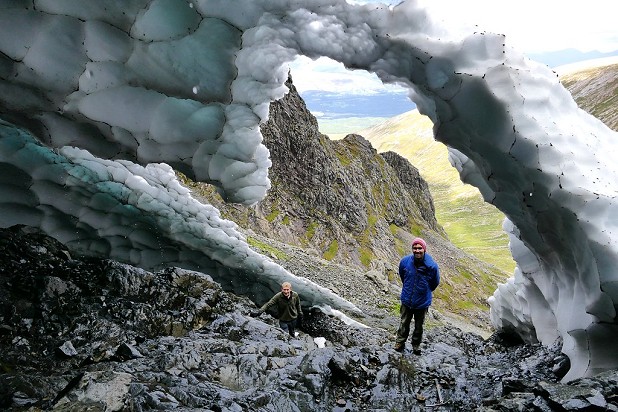

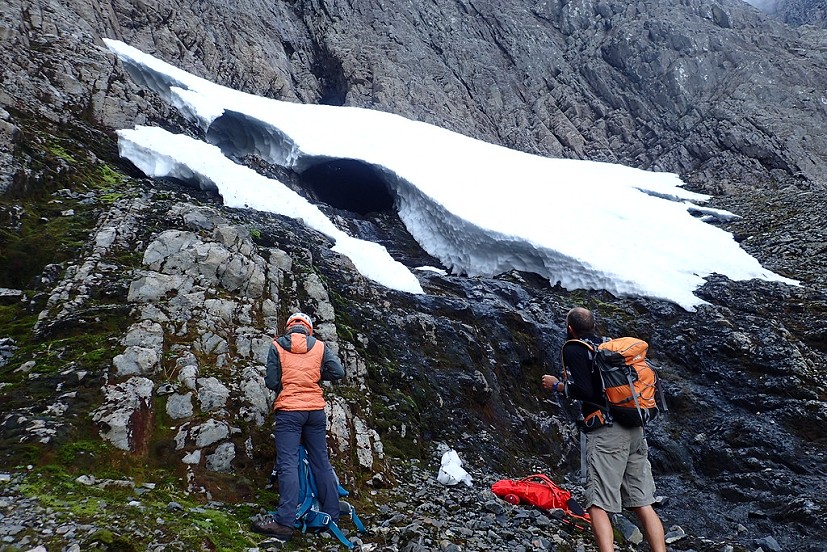

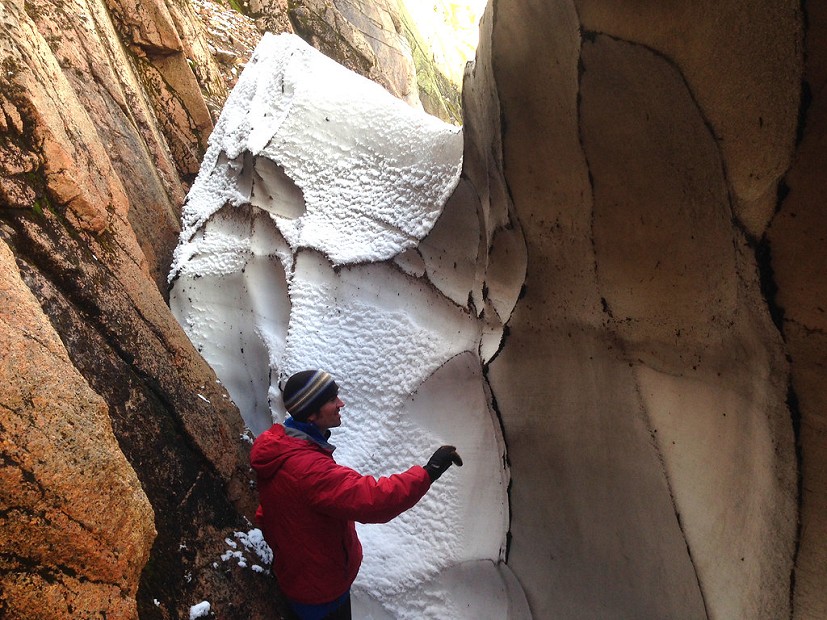


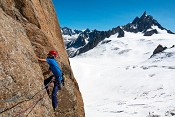
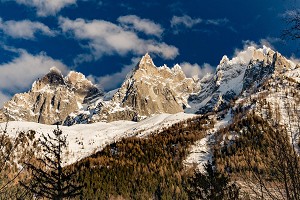







Comments
Fascinating (but sad). Have there been years when every known long-lived snow patch in Scotland has melted away completely?
Has anyone noted where snow lies longest in other mountainous areas of the UK. I can distinctly recall seeing a snow band around the summit plateau of Cross Fell (almost 3,000 feet high) in the North Pennines close to midsummer. That was back in the mid-eighties and may not have been a relic of the previous winter.
Yes, there are usually observations from a number of people in the Lake District, Pennines, Cheviots, Snowdonia etc. Obviously the snow patches in these hills generally only last into May or June in a good year - the latest I have observed snow on Cross Fell was June the 13th in 2010. Like Scotland the prime locations are quite well known but it's always interesting when unusual weather like the 'Beast from the East' leaves deep drifts in different places.
I visited the Sphinx in late July a few years back and was quite amazed by the size and thickness of it. Also the breath of the Aonach Mor snowbed at that time of the year. I think it all comes down to quite heavy late snowfall. No doubt some years witness many more patches than others.
It might be a combination of how deep the snow is at the end of winter, and how warm the spring / early summer.